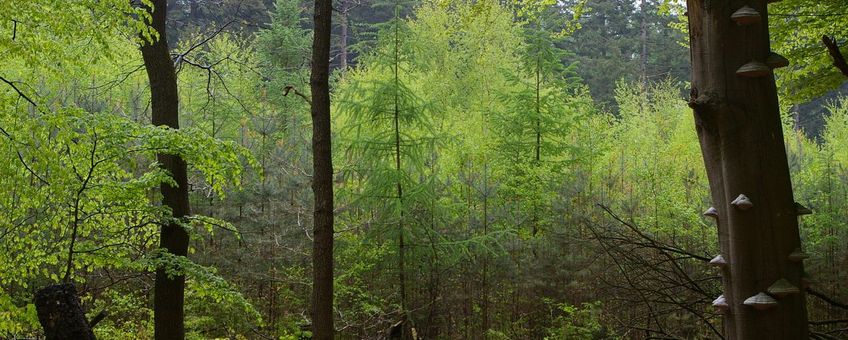
How are the Dutch forests doing?
Staatsbosbeheer, Wageningen Environmental Research, Wageningen University & ResearchThis is a much-needed effect, as the dry summers and ash dieback (Hymenoscyphus fraxineus) reduce the vitality of the Dutch forests. These and other conclusions may be drawn from the results of the 7th Dutch Forest Inventorying which took place between 2017 and 2021. Wageningen Environmental Research conducted the study at the request of the Ministry of Agriculture, Nature and Food Quality. The forest inventory has existed for eighty years and provides accurate insights into the state and development of forests in the Netherlands. Measurements were taken in over 3000 different locations. The results of this study are used to meet international accountability agreements, such as carbon sequestration detailed in the Paris Climate Agreement.
Carbon sequestration
The study shows that the forests in the Netherlands have gained structure and have become more diverse. Many monotonous forests with trees of the same age and species have become more varied, with more different types of trees and a richer undergrowth. There is also more deadwood, which benefits many insect species that depend on it. The annual timber yield has remained stable and equals half of the volume of wood growth each year. This means that the Dutch forests continue to store carbon.
Vitality
The latest inventory study included an analysis of the vitality of the Dutch forests for the first time. The results show that some tree types suffer from drought, disease and plagues. Some 70 percent of the ash trees have been affected by Hymenoscyphus fraxineus, a fungus that significantly weakens the trees. Large-scale mortality was seen among the Norway spruce as a result of drought and the subsequent beetle plagues. The growth rate in the Dutch forests as a whole declined slightly as a result of drought and the ageing of the forests.
Decline slowing down
The total area of forests in the Netherlands has dropped slightly to 363,801 hectares in 2021, according to the researchers. It seems the considerable deforestation that occurred during the period 2013-2017 has now ended.
Reforestation is still lower than in previous periods. The expedited reforestation that has been launched with new policies will only become visible later, as it takes approximately five years for new forests to be charted.
Text: Wageningen Environmental Research and Staatsbosbeheer
Photo: Jan den Ouden
